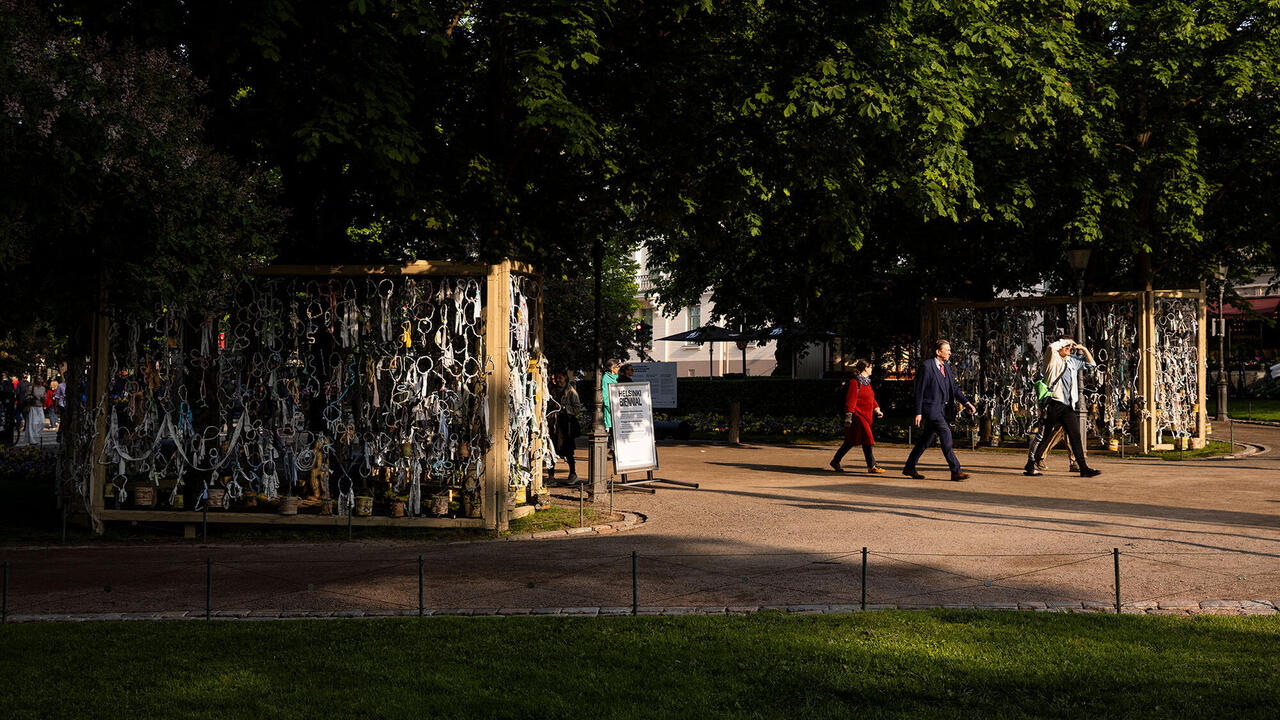Liebe ist kälter als das Kapital
Kunsthaus Bregenz
Kunsthaus Bregenz

Since King Jigme Singye Wangchuck of Bhutan coined the term ‘gross national happiness’ in the late 1970s, the happiness rankings drawn up by bodies including the Organization for Economic Co-operation and Development (OECD) have broadened countries’ evaluative models to include more than just economic factors. Including social and emotional aspects in such calculations may lead to a more complex understanding, but it also contributes to a trend that cultural critics on both the left and right deplore as typical of capitalism: the quantification of qualities long considered unquantifiable.
This is the theme of the group exhibition Love Is Colder Than Capital at Kunsthaus Bregenz featuring works by 16 artists that attempt to illustrate the chains of value creation in today’s emotional economies (in this context, the ‘art work’ takes on an ironic connotation). The show includes Cathy Wilkes’ morbid mixed media installation I give you all my money (2008) with desolate showroom dummies and empty supermarket checkouts, several paintings and a vitrine with brochures by Minerva Cuevas on the controversial issue of animal rights (including Perro Blanco, 2012), as well as Hans Haacke’s installation Weite und Vielfalt der Brigade Ludwig (Breadth and Diversity of the Ludwig Brigade, 1984) that includes a painting of the industrialist, patron of the arts, and buyer of East German art Peter Ludwig depicted in the style of Socialist Realism. The show’s curator, Kunsthaus director Yilmaz Dziewior, borrowed the title from playwright René Pollesch, who specializes in exploring human existence under post-industrial conditions (Pollesch, for his part, adopted the title of Rainer Werner Fassbinder’s film Love is Colder Than Death, 1969).
An exhibition with the kind of global scope suggested in the title is bound to fail, and this is more or less dictated by the concept. The subject matter is just too extensive, too diffuse and too contradictory to be rendered in convincing form. And what is the exhibition supposed to show? A physiognomy of the emotional economy of capitalism? If so, then what is the reason for including several of Cindy Sherman’s self-metamorphoses (all Untitled, 2008), and why does Keith Haring, with nine works, occupy such a prominent place? Does a single version of ‘capitalism’ even exist? And do emotions have fixed values? Had the show’s overall concern been stated more clearly, then perhaps the choice of works might not have appeared so arbitrary, even if they do include undeniably strong pieces like Julika Rudelius’s video installation One of Us (2010). In the style of a reality TV show, interrupted only by subtle interventions by the artist, Rudelius had well-heeled collector couples from Miami talk about their relationships in front of the camera, creating a disturbing document between romance and cool self-promotion.
As Rudelius’s borrowings from the strategies of mass media suggest, capitalism has long since developed complex modes of reception that compete openly with art. In this case, there is no longer any categorical difference between art and television. Advertising and entertainment are now routinely equipped with multiple codes that allow them to be read on different levels – thus calling into question any convenient distinction between advertising that appeals primarily to the emotions and art that mainly serves insight. And, more generally, when authors like Jean-Christophe Ammann consider underwear adverts as art, then an ‘exhibition on the value of emotions’ (the show’s subtitle) also has its origins where this value is forcibly created – in the media of consumer culture itself.
Against the backdrop of such hybridization processes, some of the works in the Bregenz show appear almost obtrusively illustrative, like Pascale Marthine Tayou’s Empty Gift (2013), a sphere reaching from floor to ceiling covered with gift wrapping, or Rosemarie Trockel’s book and poster edition Lebendes Geld (Living Money, 2006). One of the posters shows a greatly enlarged reproduction of a Life magazine cover from 1964. It shows the actress Shirley Eaton, her entire body painted gold, as the Bond girl Jill from Goldfinger (1964). In a more open context, this piece could certainly present a challenge to the hermeneutic skills of exhibition-goers. In this setting, however, the golden girl becomes an unsubtle symbolic figure that loses part of the dark, worrying glamour it had in the film. There it was intended primarily as entertainment.
Translated by Nicholas Grindell
















